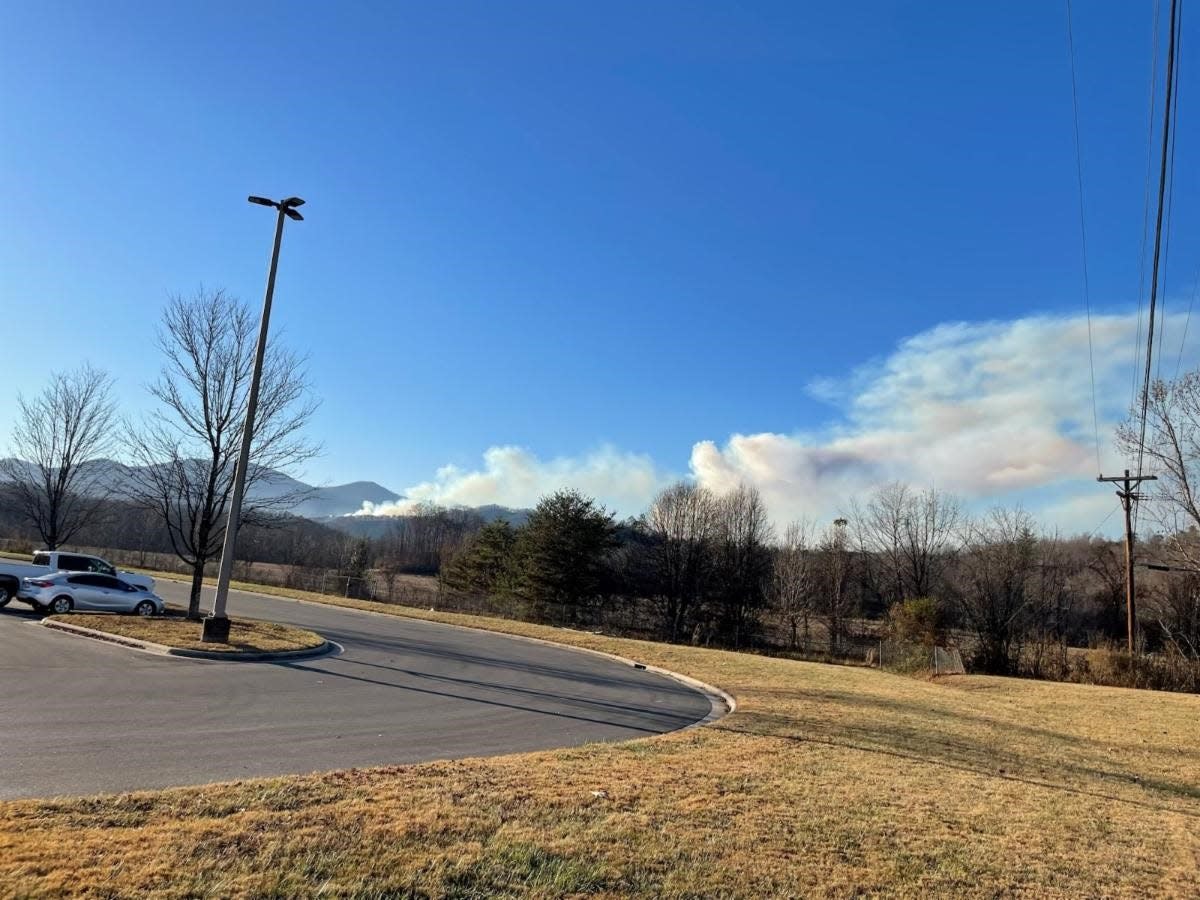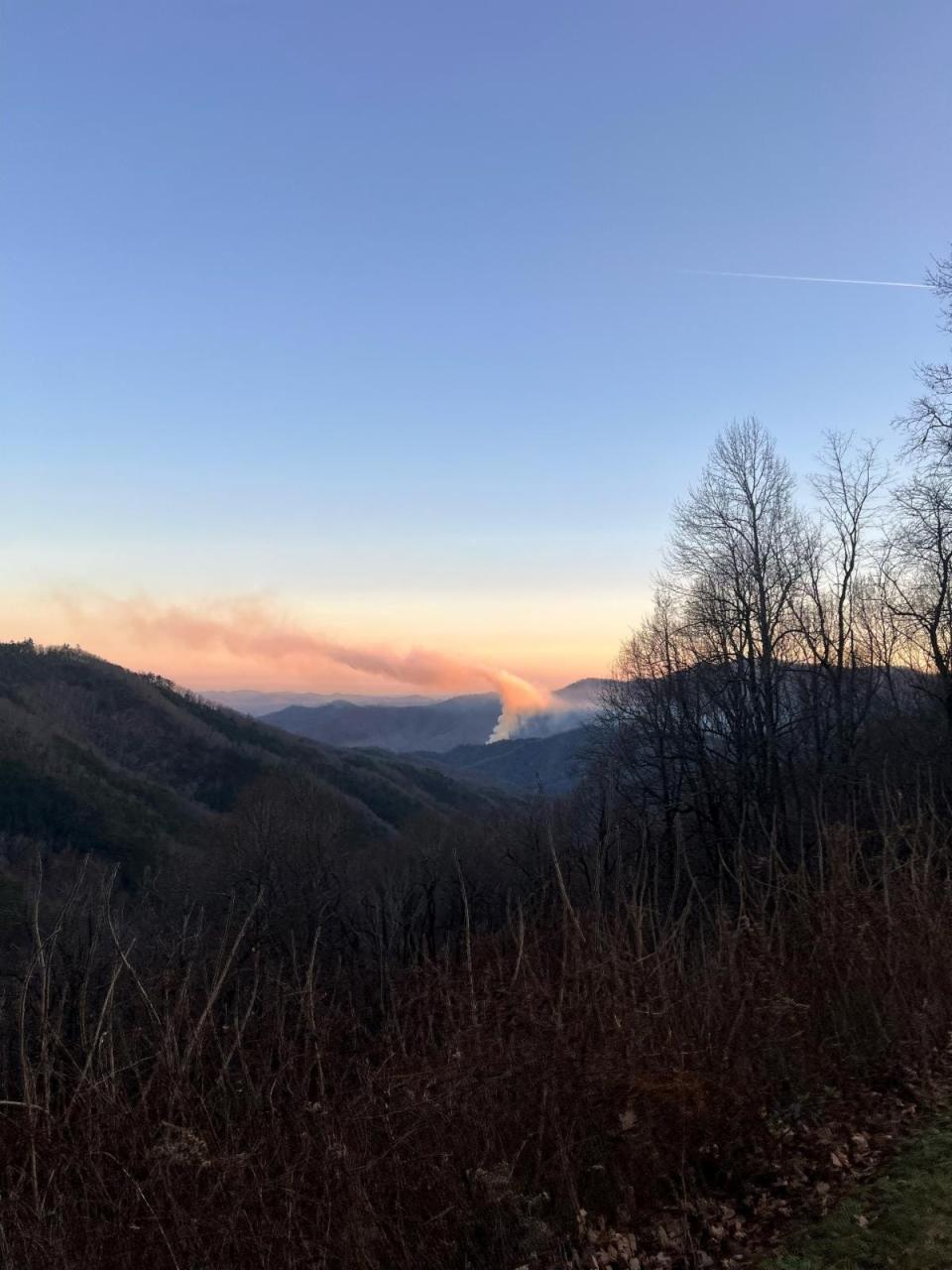WNC wildfire update: What to know about fires in McDowell and Haywood counties

Wildfire season is winding down as the weather cools and climate becomes more humid in Western North Carolina. Larger fires that raged throughout the region earlier in the fall have subsided.
North Carolina rescinded burn bans in 30 counties recently and Buncombe County ended its own burn ban. There are still a few wildfires burning in WNC.
U.S. Forest Service spokesperson Jenifer Bunty told the Citizen Times in a series of emails that firefighters have planned “limited operations for the day.” Given the wet conditions, firefighters will be onsite and monitoring the fires’ activity.
People in WNC may smell “wet smoke” given the conditions, Bunty said. But the smoke should not impact visibility.
Here’s where the fires stand:
Locust Cove Fire No. 2
The Locust Cost Fire No. 2 in the Sunnyvale area of McDowell County is currently 25% contained at 165 acres, according to a Dec. 2 email from Bunty.
There have not been any injuries, structural damage or closures related to the fire, Bunty said. The source of ignition is still under investigation. A unified command of 40 individuals have been dispatched to the scene.
According to a Dec. 1 USFS news release, the fire began Nov. 29. Firefighting efforts were focused on slowing the head of the fire and protecting private property as of Nov. 30.
“Burnout operations were successful in securing the area around private homes and preventing the fire from moving onto private lands,” the release read.
Clear Creek Fire
The Clear Creek Fire near Highway 80, south of Lake Tahoma in McDowell County, is 40% contained at 124 acres, Bunty said. There have been no injuries, structural damage or closures because of the fire. There are currently 61 firefighters on the scene. Likewise, firefighters are using indirect tactics to fight the fire.
The source of the fire is still under investigation. According to a Dec. 1 USFS news release, the fire began on private land Nov. 30.
As of Dec. 1, efforts were focused on protecting structures and securing perimeters around private properties.
Black Bear Fire
The Black Bear Fire in the Haywood County region of Pisgah National Forest is 90% contained, Bunty said. She did not have a current estimate for the size of the fire, but previous evaluations note it was 1,888 acres.
No injuries or structures are currently threatened, Bunty said, but the Appalachian Trail section from Brown Gap Road to I-40 is closed. While 30 firefighters are currently assigned to the fire, a 20-person crew will arrive Dec. 2, Bunty said.
More: 2 wildfires grow near U.S. 80 in Pisgah National Forest; rain and humidity helping abate
More: Buncombe County to cancel burn ban, citing light winds, Great Smokies ban lifted
“Firefighters are recovering contingency lines today. The increased fire activity is currently on the ridge system between Snowbird Creek and Painter Branch,” Bunty said.
What weekend weather means for wildfires
Rainy conditions with light winds during the weekend in WNC will be unfavorable to wildfire spread, according to National Weather Service Meteorologist Harry Gerapetritis, who spoke to the Citizen Times Dec. 2.
Areas around the Great Smoky Mountains could see an inch and a half of rain over the weekend, Gerapetritis said. However, he said there may be only a quarter of an inch of rainfall in Haywood County around the Black Bear Fire.

He said it may not rain again until the end of next week.
Despite the showers, much of the Asheville area will remain in moderate to severe drought, Gerapetritis said.
From the beginning of the year to Dec. 1, the Asheville Regional Airport area typically sees 45.5 inches of rain, he said. That area has only seen 32.13 inches of rain thus far.
Mitchell Black covers Buncombe County and health care for the Citizen Times. Email him at mblack@citizentimes.com or follow him on Twitter @MitchABlack. Please help support local journalism with a subscription to the Citizen Times.
This article originally appeared on Asheville Citizen Times: Western North Carolina wildfires include McDowell, Haywood counties

